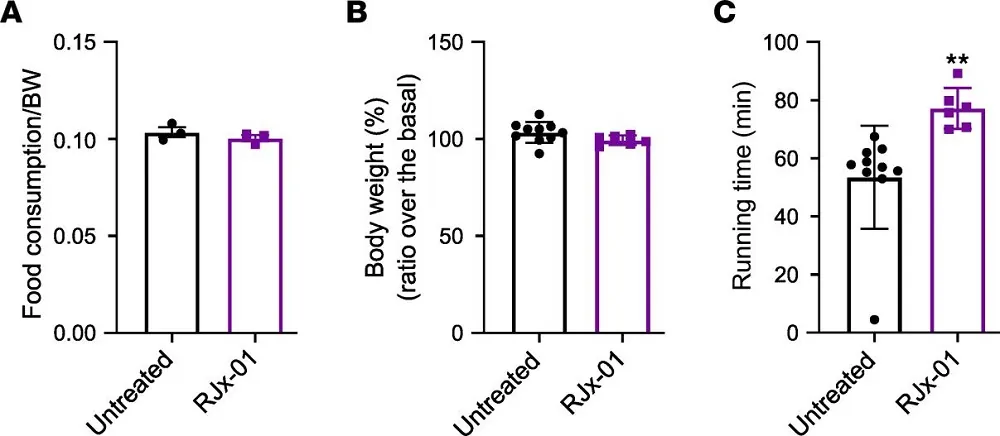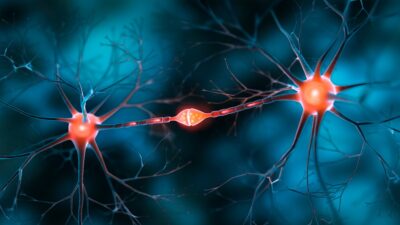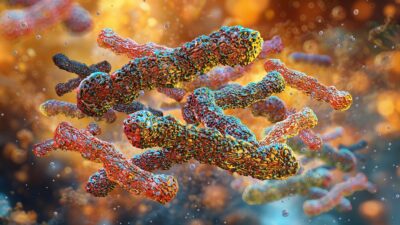Metformin and Galantamine To Combat Muscle Loss
- The combination had effects that neither drug had alone.

Researchers associated with Rejuvenate Biomed and publishing in JCI Insight have conducted multiple experiments on a combination of metformin and galantamine in animal models. These preclinical experiments are intended to be a prelude to a human trial for sarcopenia.
A debilitating disease with no pharmaceutical treatments
The researchers start by discussing the well-known problem of sarcopenia, the age-related loss of muscle mass that leads to increasing frailty in older people, with prevalence reaching at least half of 80-year-olds, and has no treatments other than lifestyle interventions [1].
Metformin has been used to treat Type 2 diabetes for decades [2] and has been found to be associated with longer lifespans in people [3]. Previous research has found that part of its mechanism of action involves the AMPK pathway, which is related to mitochondrial function [4] and muscle regeneration [5].
Galantamine, while lesser known, is used to treat Alzheimer’s disease [6]. This drug has anti-inflammatory effects and has been found to improve cholinergic transmission, a way in which nerve cells talk to each other [7]. Therefore, these researchers believe that it may be effective in aiding neuromuscular junctions, the places where nerves and muscles meet.
Because of their non-overlapping and potentially synergistic effects, Rejuvenate Biomed has chosen a combination of these two drugs, labeled RJx-01, as a potential sarcopenia treatment.
Initial experiments in worms
The researchers first began their experiments in C.elegans worms, which are frequently used in aging studies. The relevant sarcopenic mechanisms apply to both worms and people [8]. Unlike metformin, galantamine has never been tested as a life extension drug in these animals.
The researchers tested these compounds individually and in combination. Metformin, in accordance with previous studies, increased C.elegans lifespan by about 12%. Galantamine increased it by almost 7%. However, the RJx-01 combination treatment increased lifespan by about 22% in these animals, showing a synergistic effect.
RJx-01 also increased these worms’ physiological parameters. Maximum and average speed, time spent moving, muscle cell occupancy, and muscle fiber organization were all significantly improved compared to controls.
Recapitulated in a mouse model
The researchers then turned to a mouse model. These mice were genetically depleted of OPA1, a protein needed for muscle maintenance, and these mice exhibit symptoms that very strongly resemble human sarcopenia.
RJx-01 was effective in these mice. Compared to untreated controls, treated mice retained their muscle mass and fast-twitch fibers, and they were able to run for far longer. Critical to this experiment, neither metformin nor galantamine were able to accomplish this alone; only the combination showed significantly positive effects. The researchers attribute these results to the considerably better retention of nerves in the muscle tissue.
These findings were recapitulated in naturally aged (22-month-old) mice as well. The researchers stopped testing metformin and galantamine in the wild-type experiments; only RJx-01 was compared to the control group. Similar to the OPA1-depleted mice, the wild-type aged mice given this compound had improved longer running times.

While the fibers between treated and untreated mice looked similar, there were significant differences in strength. The researchers attribute this to the presence of more innervated muscle fibers, just like in the worm experiment.
Markers of inflammation and other parameters were also significantly improved in aged mice. Interleukins, a group of compounds that promote inflammation, were considerably more abundant in controls than in treated animals. There were also notable improvements in mitochondrial morphology, and the waste-clearing process of autophagy was significantly improved in the muscles of treated mice.
A prelude to human experiments
One of this study’s authors was Rejuvenate Biomed’s CEO, and another employee was also an author. This study was funded by the company with the clear intent of bringing its sarcopenia treatment to human clinical trials, and the authors hold that their strongly positive findings are sufficient to begin such trials.
Literature
[1] Dent, E., Morley, J. E., Cruz-Jentoft, A. J., Arai, H., Kritchevsky, S. B., Guralnik, J., … & Vellas, B. (2018). International clinical practice guidelines for sarcopenia (ICFSR): screening, diagnosis and management. The journal of nutrition, health & aging, 22, 1148-1161.
[2] Kulkarni, A. S., Gubbi, S., & Barzilai, N. (2020). Benefits of metformin in attenuating the hallmarks of aging. Cell metabolism, 32(1), 15-30.
[3] Bannister, C. A., Holden, S. E., Jenkins‐Jones, S., Morgan, C. L., Halcox, J. P., Schernthaner, G., … & Currie, C. J. (2014). Can people with type 2 diabetes live longer than those without? A comparison of mortality in people initiated with metformin or sulphonylurea monotherapy and matched, non‐diabetic controls. Diabetes, Obesity and Metabolism, 16(11), 1165-1173.
[4] Zong, H., Ren, J. M., Young, L. H., Pypaert, M., Mu, J., Birnbaum, M. J., & Shulman, G. I. (2002). AMP kinase is required for mitochondrial biogenesis in skeletal muscle in response to chronic energy deprivation. Proceedings of the national academy of sciences, 99(25), 15983-15987.
[5] Mounier, R., Théret, M., Arnold, L., Cuvellier, S., Bultot, L., Göransson, O., … & Chazaud, B. (2013). AMPKα1 regulates macrophage skewing at the time of resolution of inflammation during skeletal muscle regeneration. Cell metabolism, 18(2), 251-264.
[6] Scott, L. J., & Goa, K. L. (2000). Galantamine: a review of its use in Alzheimer’s disease. Drugs, 60, 1095-1122.
[7] Lilienfeld, S. (2002). Galantamine—a novel cholinergic drug with a unique dual mode of action for the treatment of patients with Alzheimer’s disease. CNS drug reviews, 8(2), 159-176.
[8] Herndon, L. A., Schmeissner, P. J., Dudaronek, J. M., Brown, P. A., Listner, K. M., Sakano, Y., … & Driscoll, M. (2002). Stochastic and genetic factors influence tissue-specific decline in ageing C. elegans. Nature, 419(6909), 808-814.







